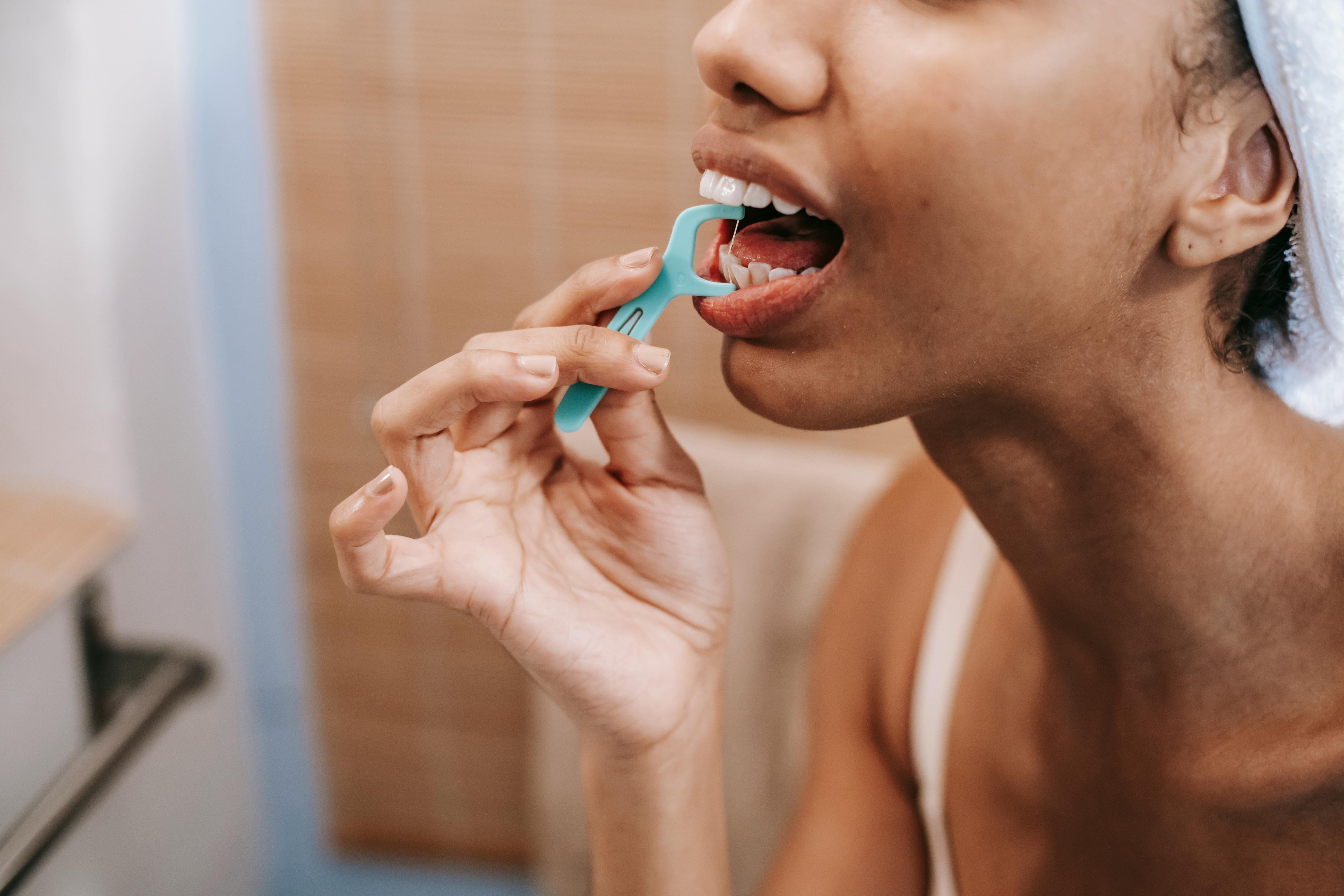Flossing is an important part of maintaining good oral health, but unfortunately, it can sometimes be uncomfortable or even painful. If flossing hurts your teeth, there may be several reasons why. In this article, we’ll look at the possible causes of dental pain while flossing and how to make flossing less painful.Flossing is a type of cleaning between the teeth to remove plaque and food particles. It is done with a special dental tool called floss, which consists of thin, waxed string that is used to slide between the teeth. Flossing helps prevent tooth decay and gum disease, and should be done at least once a day for optimal oral health.
What are the Benefits of Flossing?
Flossing is a simple yet effective way to keep your teeth and gums healthy. It has a range of benefits, including reducing plaque buildup, reducing the risk of gum disease, and freshening breath. Regular flossing also helps to prevent tooth decay by removing food particles that can get stuck between your teeth. By flossing every day, you can help to maintain good oral hygiene and keep your mouth healthy.
Flossing removes plaque and bacteria from between your teeth, which can help prevent cavities and gum disease. Plaque is a sticky film that accumulates on your teeth over time and can cause inflammation in the gums if left untreated. Flossing daily can help remove this plaque before it has a chance to cause problems. Additionally, flossing stimulates the gums and helps promote better circulation in the mouth, which can reduce inflammation and improve overall health.
Flossing also helps to remove food particles from between your teeth that brushing alone cannot reach. These particles can provide a breeding ground for bacteria if not removed regularly. By flossing every day, you can help reduce the amount of bacteria in your mouth, which can lead to fresher breath and fewer cavities.
In addition to these benefits, regular flossing also helps to promote better overall oral hygiene. Flossing removes plaque build-up from hard-to-reach areas where brushing may not be able to reach as effectively. This helps keep your mouth clean and free of debris so that it stays healthy for longer periods of time. Regular flossing is an important part of maintaining good oral hygiene habits that will help keep your smile looking its best!
What Can Cause Pain While Flossing?
Flossing is an important part of oral hygiene and should be done regularly. However, some people may experience pain while flossing. This pain can be caused by a variety of factors, including gum disease, cavities, an infection, or an impacted wisdom tooth. Additionally, improper technique can lead to irritation or soreness in the gums. People with braces may also experience discomfort when flossing due to the metal wires and brackets. Finally, some people may be sensitive to certain types of dental floss or may have a reaction to the chemicals used in pre-packaged flossers.
In order to reduce pain while flossing, it is important to use proper technique and ensure that the dental floss is not pulled too tightly against the gums. Additionally, individuals with braces should be extra careful when flossing around their brackets and wires as they can cause more irritation if not handled correctly. If discomfort persists after making these adjustments, it could be a sign of an underlying issue such as cavities or gum disease and it is important to see a dentist for further diagnosis and treatment.
Reduce Pain While Flossing
Flossing is an important part of oral hygiene and helps to keep teeth and gums healthy. However, for some people, flossing can be painful. There are a few things that can be done to reduce pain while flossing.
The most important thing is to make sure that the floss is not pulled too tightly between the teeth. If it is, it can cause discomfort or even damage the gums. Floss should be pulled gently between the teeth and wrapped around each tooth in a “C” shape before moving onto the next tooth.
Using waxed floss can also help to reduce pain while flossing. Waxed floss slides more easily between the teeth, reducing friction and making it less likely for the gums to be damaged or irritated. Water picks are another option for those who find traditional floss too painful or difficult to use. Water picks use a stream of water to remove plaque from between the teeth and along the gumline without having to physically pull anything through the gaps.
Finally, using a mouthwash after flossing can help reduce pain by killing bacteria and reducing inflammation in the gums. A small amount of mouthwash should be swished around in the mouth for 30 seconds before being spit out. This will help to keep bacteria levels low and reduce any irritation in the gums caused by flossing.
By following these tips, it is possible to reduce pain while flossing and maintain good oral hygiene at the same time. It is important to make sure that proper technique is used when handling dental floss, as well as using products such as waxed floss or water picks if necessary. Regularly rinsing with an antiseptic mouthwash can also help keep bacteria levels low and reduce any inflammation caused by regular flossing.
How to Prevent Gum Damage While Flossing?
Flossing is an important part of proper dental hygiene and should be part of everyone’s daily oral care routine. However, it is possible to damage your gums while flossing if done incorrectly. To ensure that your teeth and gums are healthy, here are some tips on how to prevent gum damage while flossing:
First, you should always use a soft, waxed floss. This type of floss will be more gentle on your gums and will not irritate them as much as a non-waxed floss. You should also avoid sawing or snapping the floss between your teeth as this can cause cuts in your gums. Instead, use a gentle up and down motion when flossing.
It is also important to use the correct technique when flossing. You should start by wrapping the end of the floss around one of your middle fingers and using the other hand to gently guide it between each tooth. Once you reach the gum line, make sure to curve the floss into a “C” shape against each tooth so that you can remove any debris from beneath the gum line without damaging it.
Finally, make sure that you are using a clean section of floss for each tooth so that bacteria or food particles aren’t transferred from one tooth to another. You should also use a new piece of floss every few days or after eating sugary foods so that bacteria doesn’t build up on the floss itself.
By following these simple tips, you can ensure that your teeth and gums remain healthy while still enjoying all the benefits of regular dental hygiene with proper techniques for brushing and flossing.

Poor Oral Hygiene and Its Effect on Teeth Health
Poor oral hygiene has a significant impact on the health of teeth. It can lead to a number of dental problems, including tooth decay, gum disease, and bad breath. Without proper care, these conditions can worsen over time, leading to more serious issues such as tooth loss and even systemic health problems. Brushing and flossing regularly are essential for preventing these issues.
When teeth are not brushed and flossed properly, bacteria remain on the teeth and gums. These bacteria feed off of sugars from food particles left in the mouth after eating, producing acids that attack the enamel of the teeth. Over time, this will wear down the enamel, creating cavities that will need to be filled with dental fillings or crowns. If left untreated, tooth decay can cause extreme pain and even tooth loss.
Poor oral hygiene also increases the risk for gum disease. Untreated plaque buildup leads to inflammation in the gums that causes them to pull away from the teeth. Eventually, pockets form where bacteria can accumulate, causing further damage to both the gums and bone that supports the teeth. If gum disease is severe enough it can also lead to tooth loss or other serious medical conditions such as heart problems or stroke.
Bad breath is another common problem linked to poor oral hygiene habits. Bacteria builds up on the tongue as well as in between teeth when brushing is neglected or inadequate; this causes a foul smell when speaking or breathing out through your mouth. In addition to being unpleasant for others around you, bad breath can be an indication of more serious underlying dental issues that need medical attention right away.
Maintaining good oral hygiene habits is essential for preventing all of these issues from occurring in the first place. Brushing two times a day with a fluoride toothpaste and flossing daily helps remove bacteria from your mouth before it has a chance to build up on your teeth or gums. Additionally, visiting your dentist regularly for professional cleanings will help keep your mouth healthy by removing plaque and tartar buildup that may be missed when brushing at home. Taking good care of your teeth now will help ensure they stay healthy for years to come!
Maintaining Good Oral Hygiene
Good oral hygiene is essential for keeping your teeth and gums healthy and preventing bad breath. It is important to brush your teeth at least twice a day with fluoride toothpaste, floss daily, and use mouthwash regularly. Additionally, there are a few other steps you can take to ensure good oral hygiene and maintain healthy teeth and gums.
Brushing your teeth correctly is essential for good oral hygiene. You should brush for at least two minutes, making sure to cover all areas of the mouth. Use a soft-bristled brush and fluoride toothpaste. Replace your toothbrush every three months or sooner if the bristles start to fray.
Flossing each day will help remove food particles and plaque from between your teeth where toothbrush bristles cannot reach. It is important to use proper technique when flossing to ensure that all areas of the mouth are reached effectively.
Mouthwash can be used to help reduce plaque buildup, freshen breath, and kill bacteria in the mouth. It is best used after brushing and flossing in order to help rinse away any remaining food particles or bacteria that may be present in the mouth.
In addition to brushing, flossing, and mouthwash, it is important to visit your dentist regularly for check-ups and cleanings. This will help prevent gum disease as well as identify any potential problems early on before they become more serious issues. Eating a balanced diet with plenty of fruits and vegetables will also help keep your teeth strong and healthy by providing them with essential vitamins and minerals needed for optimal health.

Conclusion
Flossing is an important part of a regular oral hygiene routine. Flossing can cause some discomfort, but it is normal and should not cause any serious pain. If flossing causes severe pain, it may be a sign of an underlying oral health problem. It is important to talk to your dentist or healthcare provider about any pain or discomfort that occurs while flossing. With proper technique and regular use, flossing can help keep your teeth and gums healthy for life.
Overall, although flossing may be uncomfortable at first, it is an important part of maintaining healthy teeth and gums. Remember to always floss gently and consult your dentist if you experience any severe or persistent pain while flossing. With proper technique and regular use, flossing can help keep your teeth and gums healthy for life.
